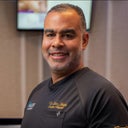I would like nose surgery, to help with the asymmetrical nature of my face. I have a deviated septum clearly but I was wondering whether it was possible to deproject my nose to look more natural. I don't want a button nose at all, nor a little slope on my nose, I just want a smaller version if that makes sense. I'm afraid of this not happening and looking natural. I am also considering lip fillers. Thankyou
Answers (9)
From board-certified doctors and trusted medical professionals
Dr. Steven M. Denenberg, MD

Dr. Steven M. Denenberg, MD
Board Certified Facial Plastic Surgeon
Answer
Dr. Suleyman Tas, MD, FEBOPRAS

Dr. Suleyman Tas, MD, FEBOPRAS
Plastic Surgeon
Answer
Dr. Charles East, MBBS, FRCS

Dr. Charles East, MBBS, FRCS
Facial Plastic Surgeon
Answer
Dr. Paul E. Chasan, MD, FACS

Dr. Paul E. Chasan, MD, FACS
Board Certified Plastic Surgeon
Answer
Dr. Ronald J. Edelson, MD

Dr. Ronald J. Edelson, MD
Board Certified Plastic Surgeon
Answer
Dr. Richard G. Reish, MD, FACS

Dr. Richard G. Reish, MD, FACS
Board Certified Plastic Surgeon
Answer
Dr. Julian Rowe-Jones, MBBS, FRCS (Eng), FRCS (ORL)
Dr. Julian Rowe-Jones, MBBS, FRCS (Eng), FRCS (ORL)
Facial Plastic Surgeon, Specialist Registered in Otolaryngology – Head and Neck Surgery
Answer
Dr. Farhad Ardesh, MD
Dr. Farhad Ardesh, MD
Board Certified Facial Plastic Surgeon
Answer
More Rhinoplasty Questions
See all Rhinoplasty Q&AWE SEND PRETTY
EMAILS
What’s trending? Who’s turning heads? Which TikTok myths need busting? We’ve got you. No fluff, no gatekeeping—just real talk. Get our free, unfiltered newsletter.
